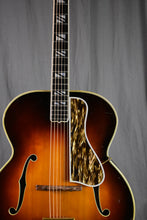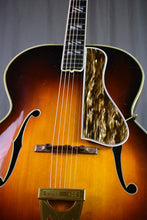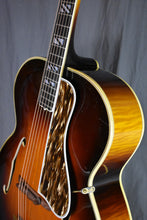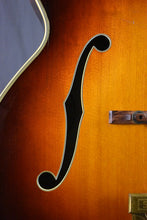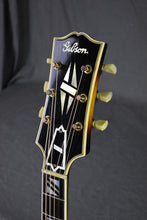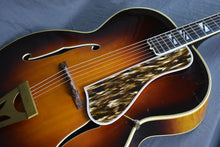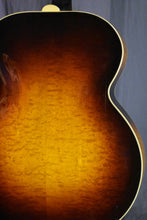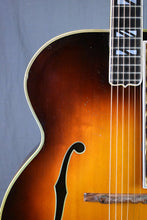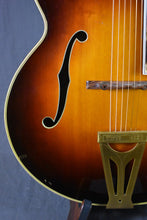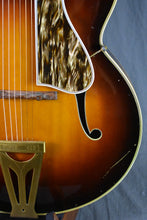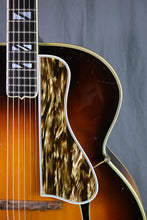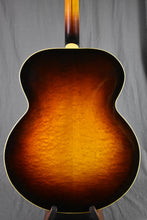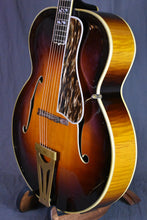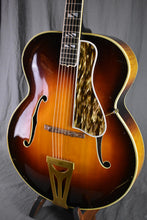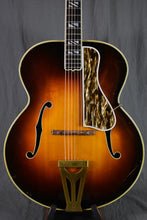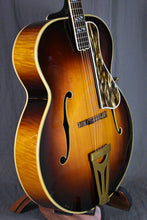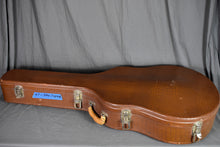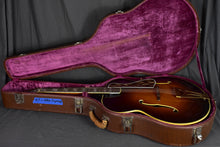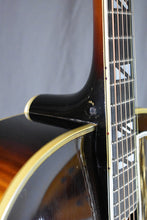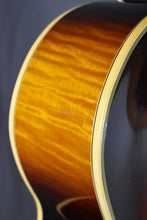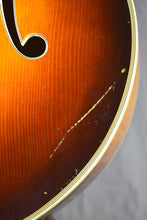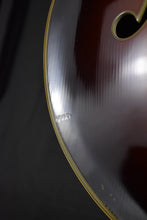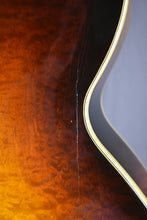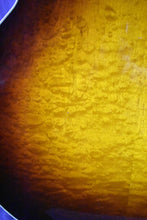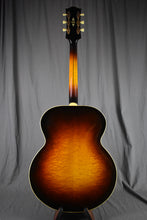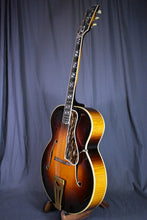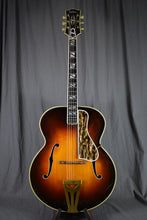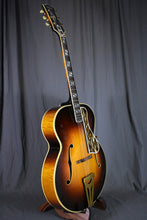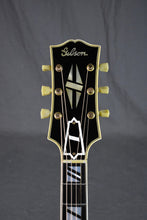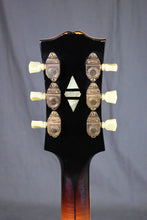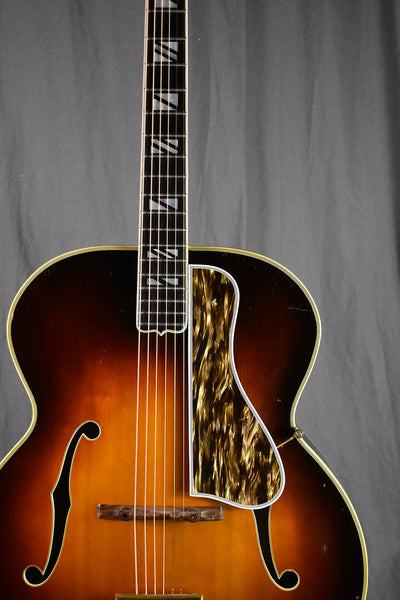Unlike many instruments whose development borrowed from a diversity of builders and tinkerers, the archtop guitar is unique because its inspiration can be traced directly to one man: Orville Gibson. Although Gibson’s early 1890s designs differ greatly from the modern archtop guitar, he set in motion nearly 50 years of innovation that provided generations of players with the right instrument and sound to push their music where it wants to go.
In 1934, Gibson introduced its most impressive and highly-appointed archtop yet: the 18″-wide Super 400. Largely because of the change from X-bracing to traditional parallel top bracing, the 1939 specifications of the Super 400 embody the pinnacle of the archtop guitar: massive 18″-wide body constructed of a carved Spruce top and gorgeous carved Curly Maple back and sides, extravagant enlarged headstock, 25-1/2″ scale length, Grover Imperial tuners, and high-end, deluxe appointments all around.
Although these specifications represent the culmination of Gibson archtop designs, this iteration of the Super 400 is rare, mostly because of its high sticker price and World War II’s effect on the guitar industry. From 1939 to 1941, the Super 400’s $400 price tag was hugely expensive, and production halted in 1942 during the war effort. In 1947, as economic conditions improved, Gibson began accepting orders for the Super 400 (built with the exact same specs introduced in ’39), but only a handful (approximately 27) were produced that year. After 1948, the Super 400 would never be the same because in 1949 Gibson opted for a rosewood fingerboard instead of ebony.
This 1947 Gibson Super 400 is a stunning example of the classic Super 400 built between 1939 and 1948. It is in excellent condition with very fine cosmetics for its age, and it is an excellent sounding and playing example of the model. As for repairs or issues, 1) Its nut appears to be original, but the slot has been adjusted and shimmed for proper playing height. 2) There is a filled drill hole on the bass side of the neck heel. This is either evidence of an old strap button or some kind of after-market pickup. 3) This one sports a period rosewood Gibson bridge, but it should have shipped from Gibson with a trapezoid-inlaid ebony bridge. This 1947 Gibson Super 400 includes its original alligator case.































